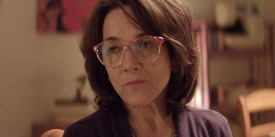
Alf Sjöberg’s 1951 adaptation of the famous Strindberg play illuminates the dark ambiguity of this story of a reckless young woman of the Swedish...

Gloria, a new film from Chile, seemed top be such a simple story that I thought “Why should I see this?” until I finally...

In this long crisis, it sometimes feels as if time has lost its meaning. Making a list, for example, of my favorite films of...